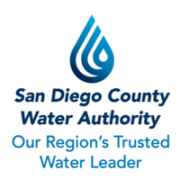Carlsbad, Calif. (Nov. 1, 2022) – The Claude “Bud” Lewis Carlsbad Desalination Plant has served more than 100 billion gallons of high-quality, locally controlled water over the past seven years – a milestone passed in late October, as California entered a fourth consecutive year of severe drought.
The plant produces an average of more than 50 million gallons of high-quality, locally controlled water every day. It’s a foundational water supply for the San Diego region that minimizes vulnerability to drought and other water supply emergencies. The facility is the largest, most technologically advanced and energy-efficient desalination plant in the nation, and it has provided a sustainable water supply to residents and businesses in San Diego County since December 2015.
“As we mark this achievement, water from the seawater desalination plant continues to reduce our dependence on imported water sources, which has the effect of making more water available for drought-stricken communities elsewhere,” said Mel Katz, Board chair for the San Diego County Water Authority. “Since coming online in 2015, the Carlsbad Desalination Plant has met nearly 10% of the region’s water demand, and it will be a core water resource for decades to come.”
The desalination plant is a key piece of the region’s multi-decade strategy to diversify its water supply portfolio. A 30-year Water Purchase Agreement between Poseidon (Channelside) LP and the Water Authority allows for the production of up to 56,000 acre-feet of water per year, enough to meet the needs of approximately 400,000 people.
Desalination uses reverse osmosis technology to remove water molecules from seawater. Water from the ocean is forced through tightly-wrapped, semipermeable membranes under very high pressure. The membranes allow the smaller water molecules to pass through, leaving salt and other impurities to be discharged from the facility.
“Reaching 100 billion gallons demonstrates the value, effectiveness, and reliability of the desalination plant, as it produces high-quality water to help meet the needs of the region’s residents and businesses,” said Channelside President, Sachin Chawla.
More information about the desalination plant is at carlsbaddesal.com and sdcwa.org.



